Your Cart is Empty
The Small Hive Beetle (SHB) is a pest insect affecting European honey bee colonies in multiple continents. Native to Africa, the small hive beetle has spread across the world at an alarming rate. The pest was first identified in the United States in 1996 and in Australia in 2002. Aethina tumida is the scientific name of the SHB.
Because African honeybees co-evolved with SHB, the beetle is generally a minor nuisance to African-derived colonies. SHB are much more harmful to European honeybee colonies.
SHB infestations can devastate European honey bee colonies, damaging all the major components of a hive. This includes the honey stores, pollen supplies and even the comb itself. Severe cases of infestation can significantly impact colony function. In extreme cases, this may cause the bees to abandon their hive altogether.
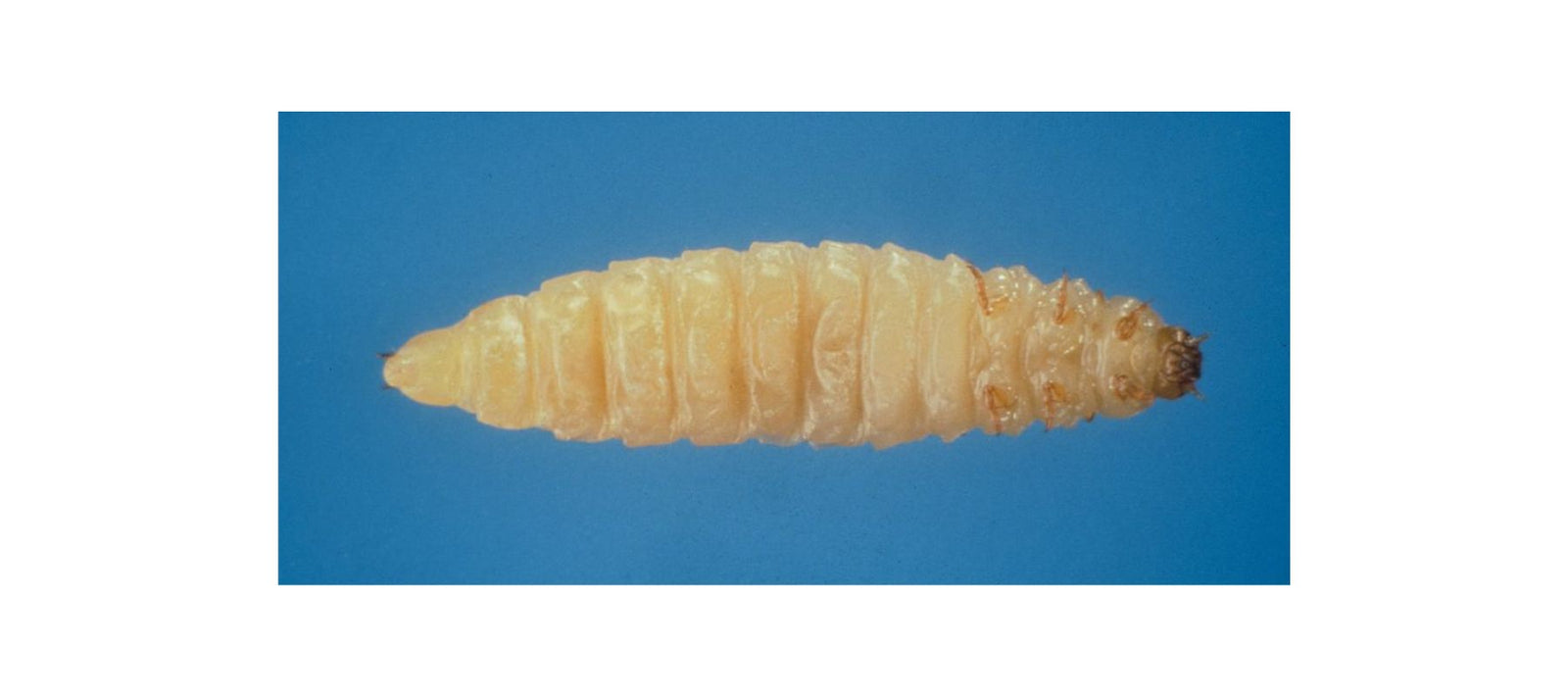
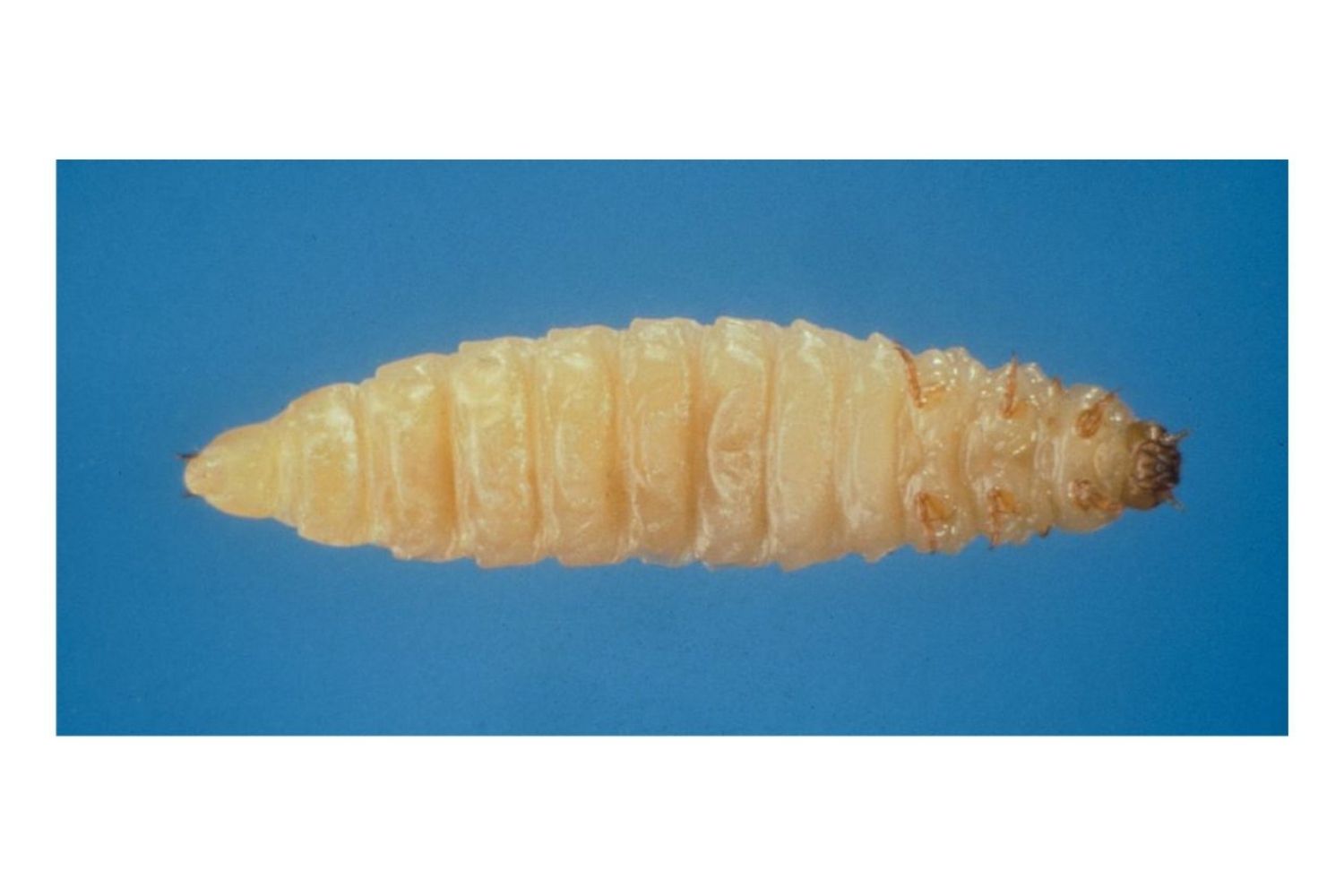
Small hive beetle larva
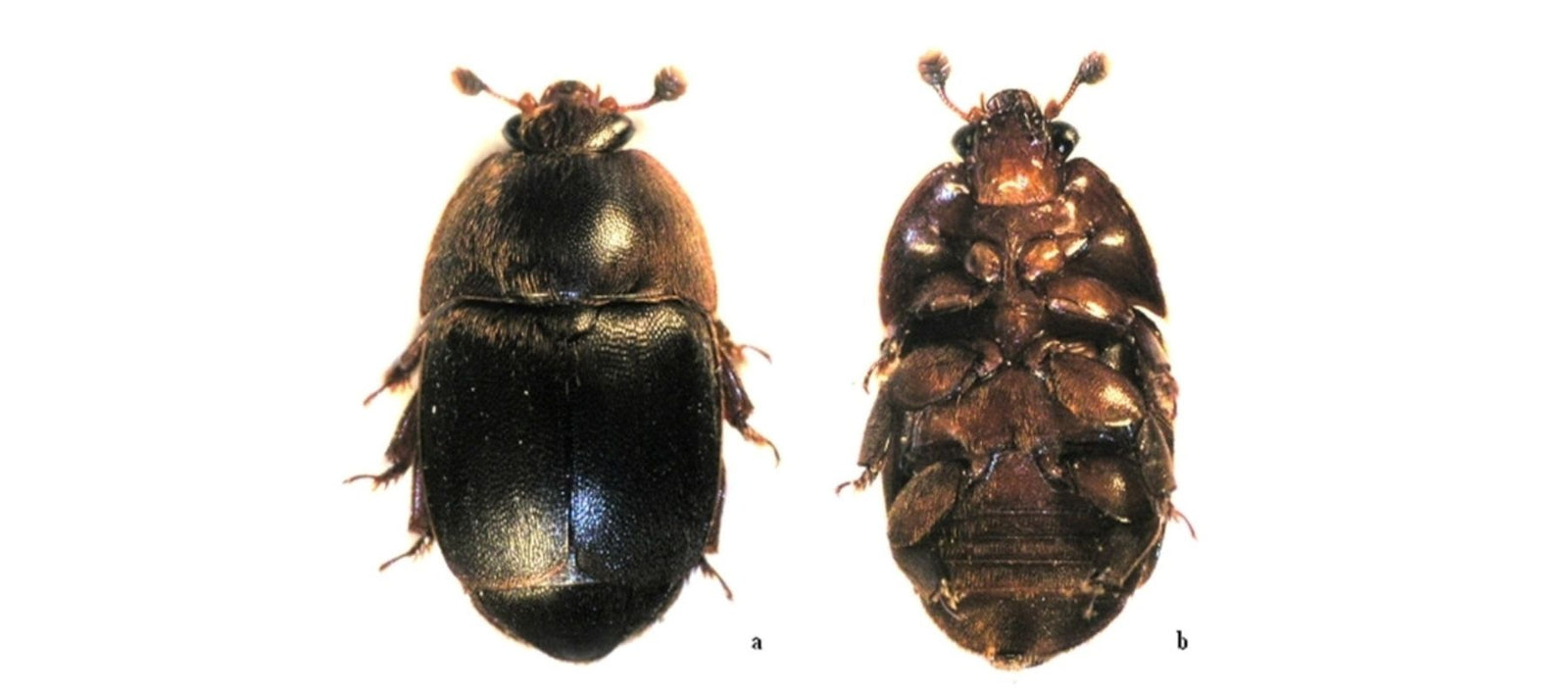
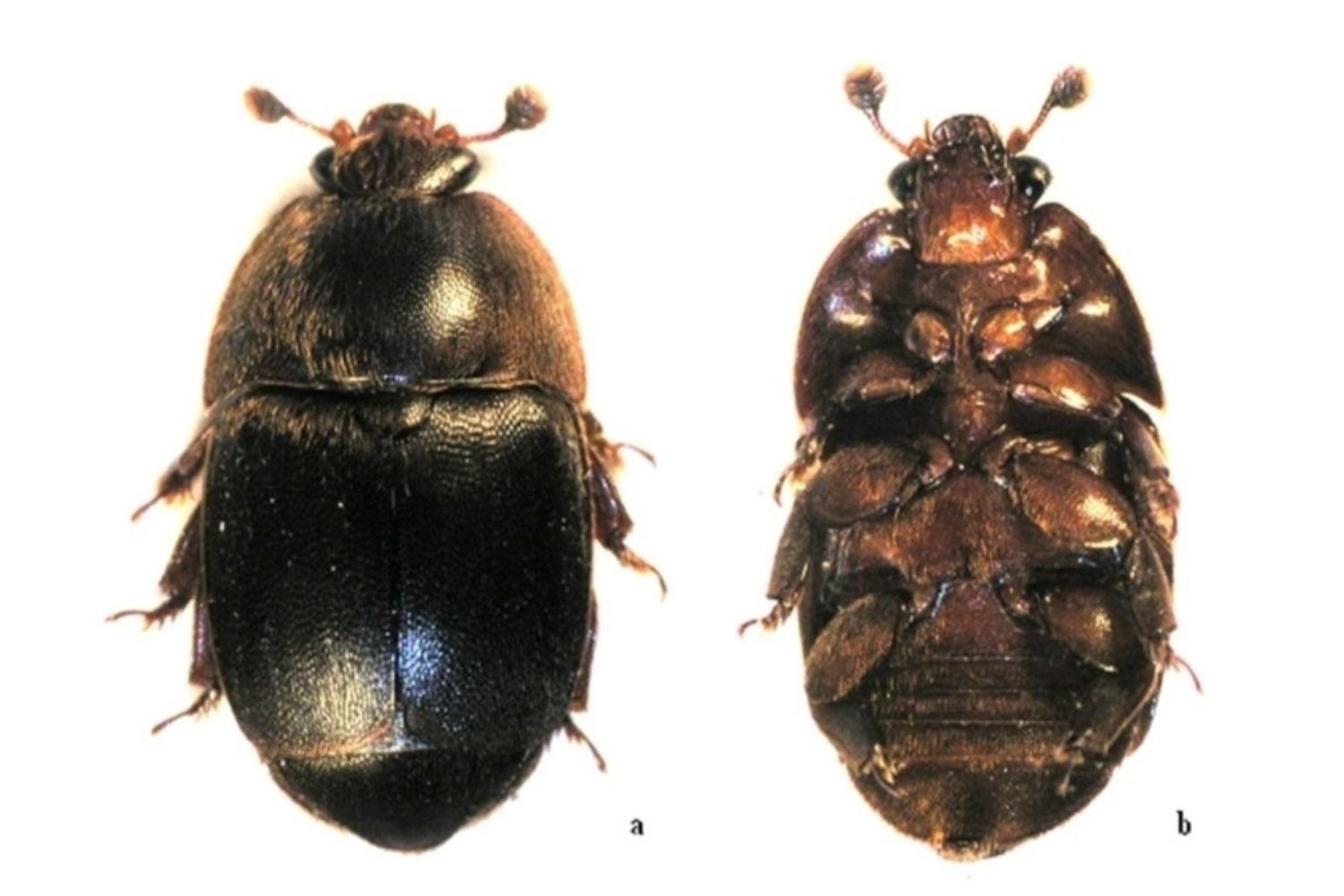
Front and back view of adult small hive beetle
Small hive beetles have clubbed antennae, are usually about 5mm long and are dark brown or black in colour.
Larvae are white with a brown/tan head, are approximately 10 mm long with three pairs of prolegs near the head. The larvae also have two rows of small spikes down their back
LIFECYCLE
- Adult beetles lay eggs in capped cells or cracks and crevices in the hive. It takes around 3 days for eggs to hatch.
- The larval stage is the most damaging in the hive. Larvae burrow through combs and cappings and consume brood, honey and pollen stores.
- Feces of the beetle and larvae contain a yeast that contaminates the honey causing it to ferment. The honey gives off an unpleasant odour and becomes slimy. This is called a ‘slime out’ and may cause the colony to die or abscond.
- After 6-14 days larvae leave the hive and burrow into the soil nearby, where they pupate. They then emerge as adult beetles.
- Under favourable conditions, the lifecycle can last just a few weeks and result in a boom in beetle numbers.
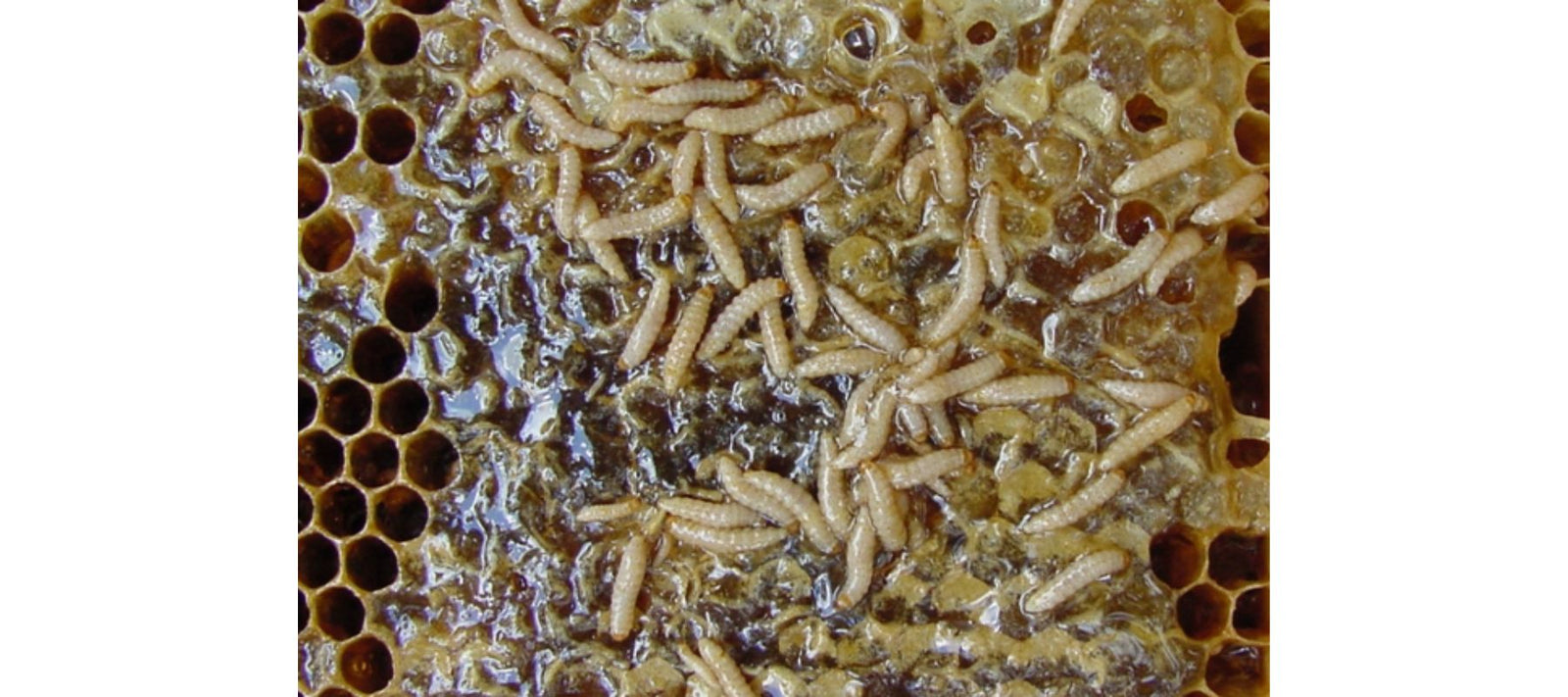
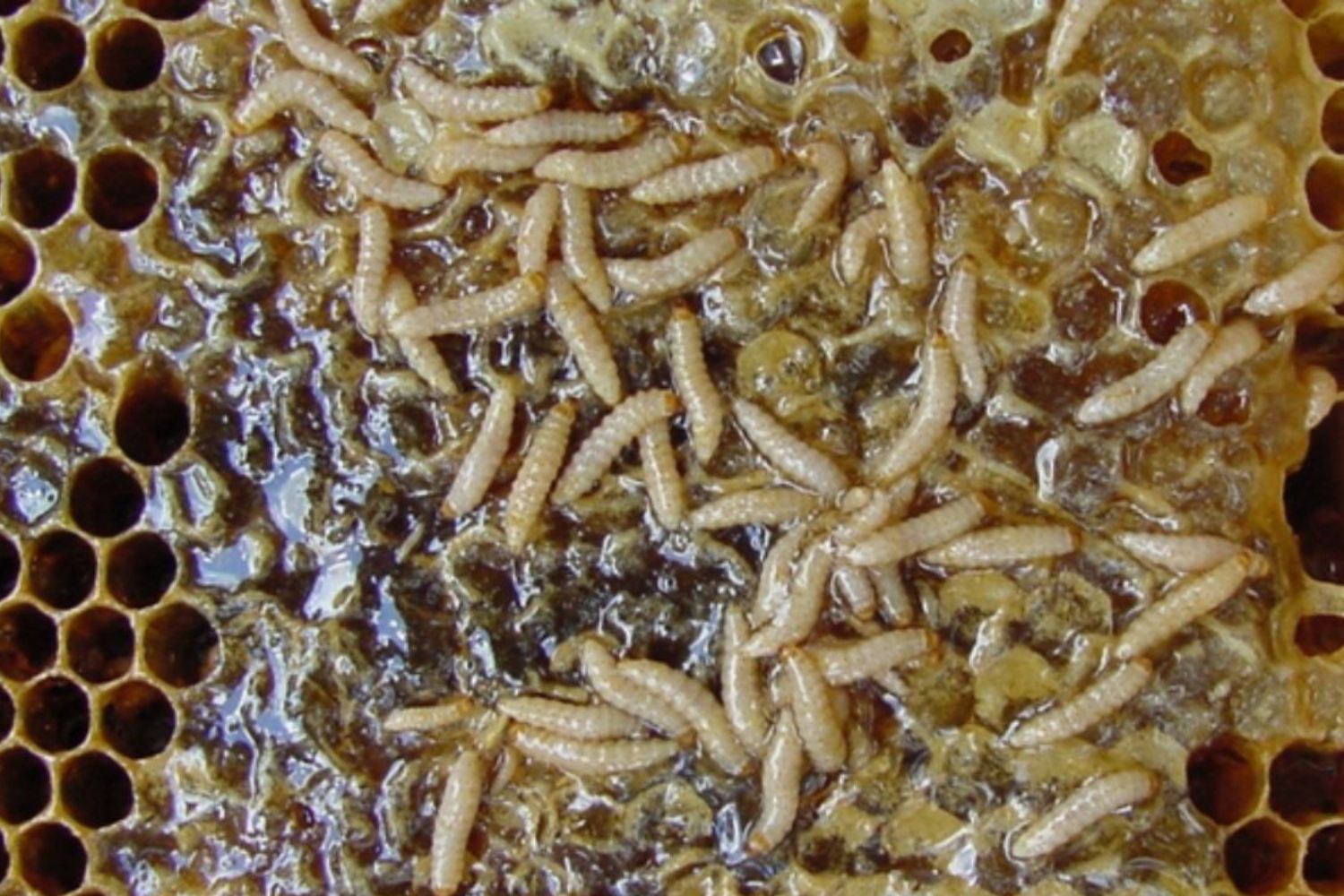
The effects of SHB on European-derived honeybee colonies include fewer adult bees, reduced pollen stores, lower foraging success, and lower brood production. Both adult and larval beetles will prey upon honey bee eggs and brood.
When large numbers of beetle eggs hatch in weak colonies, the combs of honey can become “wormy” and take on a glistening, slimy appearance (image 4, above). Heavy infestations cause the hive to become ‘slimed out’ and may cause the colony to die or abscond.
Adult beetles can fly up to 10 miles (15 km), which helps to expand their range quickly. They are also spread by beekeepers transporting bees and equipment. The spread of SHB between colonies may be largely a result of beekeepers transporting queen and package bees to other colonies, allowing the SHB to hitchhike and infest new hives. Additionally, beeswax, equipment, fruit, and even soil can contain larvae or adult beetles.
Adult SHBs can survive up to two weeks without food or water, 50 days with honeycomb, and several months with fruit. For shipping, storage and transport, this robustness poses a significant challenge in preventing further spread of the pest.
Symptoms of SHB presence will vary based on the seriousness of the infestation. Beekeepers should keep an eye out for the following:
- Damaged/destroyed brood combs: SHB larvae will eat and burrow through the colony’s combs, causing extensive damage if left unaddressed.
- Contaminated honey: These beetles will eat and contaminate honey stores.
- Contaminated honey combs appear slimy and have a characteristic smell similar to rotten oranges.
- Hive abandonment: In extreme cases, bees will fully abandon their hive due to the infestation.
SCAN HIVE COMBS AND BOXES USING ADEQUATE LIGHT
Check for adult beetles and larvae in the pest management tray if you have one. The Flow Hive 2 and 2+ come with this tray.
Beekeepers can use a torch to inspect all areas of the hive. First, the hive roof should be removed and the interior checked for adult beetles scattering away.
Next, the upper brood chamber (for double brood colonies) as well as supers should be inspected. Boxes should be moved out of the way, left for a few minutes and then checked again to see if any beetles are present.
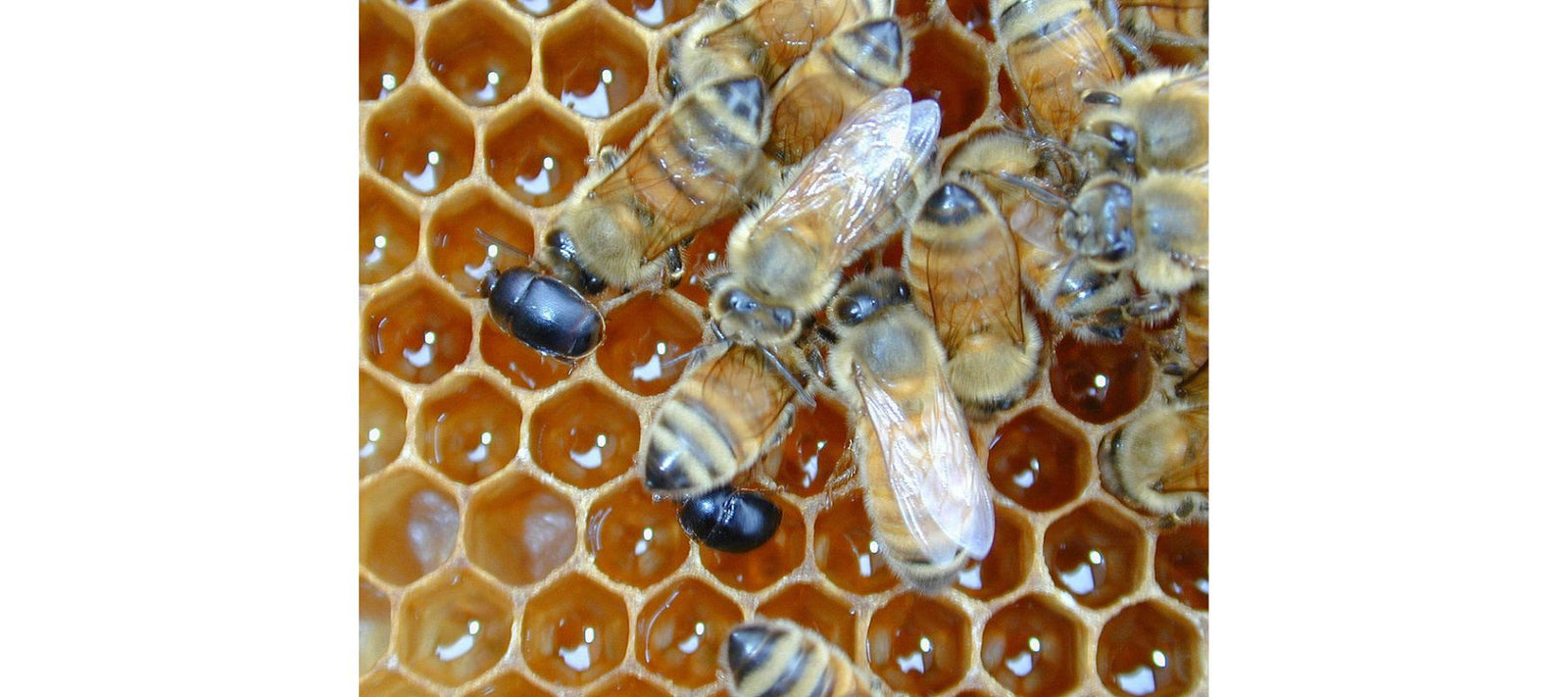
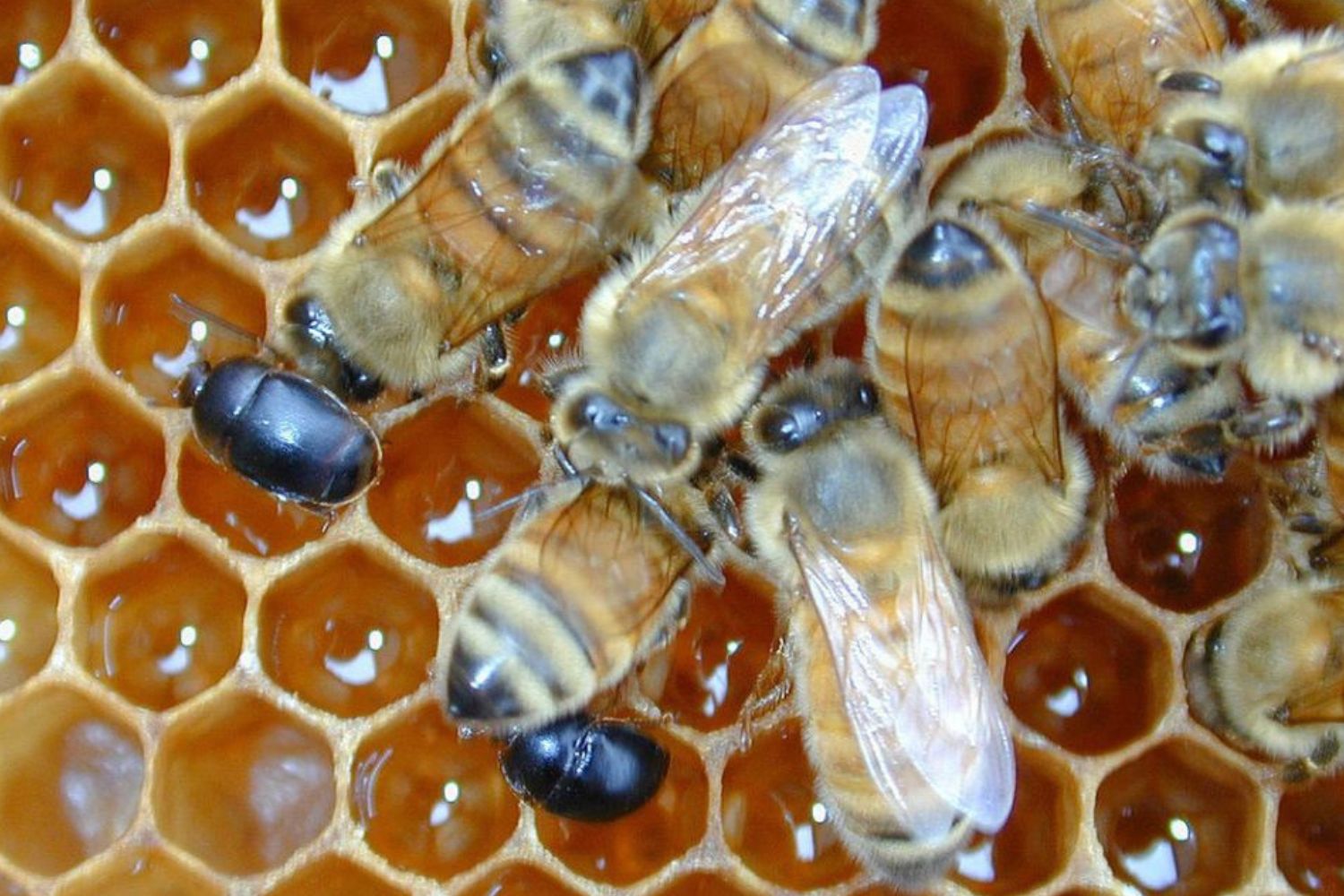
This inspection process should also be completed regularly to ensure infestation does not occur in the future.
USE CORRUGATED CARDBOARD TO DETECT SHBS
Beetles tend to seek out dark places to hide. One of the simplest ways for beekeepers to detect potential infestation is with a simple piece of corrugated cardboard.
Corrugated cardboard can be laid on the bottom of the hive, giving beetles and larvae attractive spots to crawl and hide. Beekeepers can check this cardboard very quickly without affecting the rest of the hive.
MAINTAIN STRONG HEALTHY COLONIES
- New and small colonies can be more susceptible to infestation, so be extra vigilant.
- Seal any crevices in the hive that provide an access point.
- Remove burr comb and beware of places where beetles can hide.
- This includes your honey super. Adding a super before the colony is strong enough simply creates places for pests to hide-out.
TRAPPING AND BAITING
- There is a range of commercial products and home-made devices that can be used to trap and reduce SHB numbers. These typically rely on the beetle seeking out refuge from the harassing honeybees.
- The Flow Hive 2 and 2+ come with a removable base tray that can be used to trap beetles using oil or diatomaceous earth.
STORING EQUIPMENT
- Keep your honey supers clean, as these are also prone to SHB infestation.
- Combs may contain eggs or larvae.
- Extract honey frames soon after removing or treat to kill SHB
- All lifecycle stages of SHB can be killed by freezing below 8℉ (-13℃) for at least 6 hours.
Sources:
- beeaware.org.au/archive-pest/small-hive-beetle/
- James Ellis. Hive Health: Small Hive Beetle. TheBeekeeper.org
- bee-health.extension.org/managing-small-hive-beetles/
- www.orsba.org/htdocs/download/SHB.pdf
- entnemdept.ufl.edu/creatures/misc/bees/small_hive_beetle.htm
Picture Credits:
- Dennis Anderson, CSIRO
- Jeffrey Lotz, USDA, Bugwood.org
- James D. Ellis, University of Florida, Bugwood.org
- James D. Ellis, University of Florida, Bugwood.org
- James D. Ellis, University of Florida, Bugwood.org
Beekeeping requires specialist skills, carries inherent dangers, and is often subject to regulation. Instructional content we provide is intended as a general guide only and may not be applicable to your specific circumstances. If in doubt, seek assistance from your local authority, a professional beekeeping service or your nearest beekeeping association.















